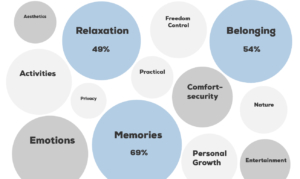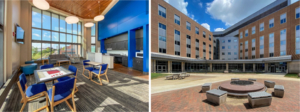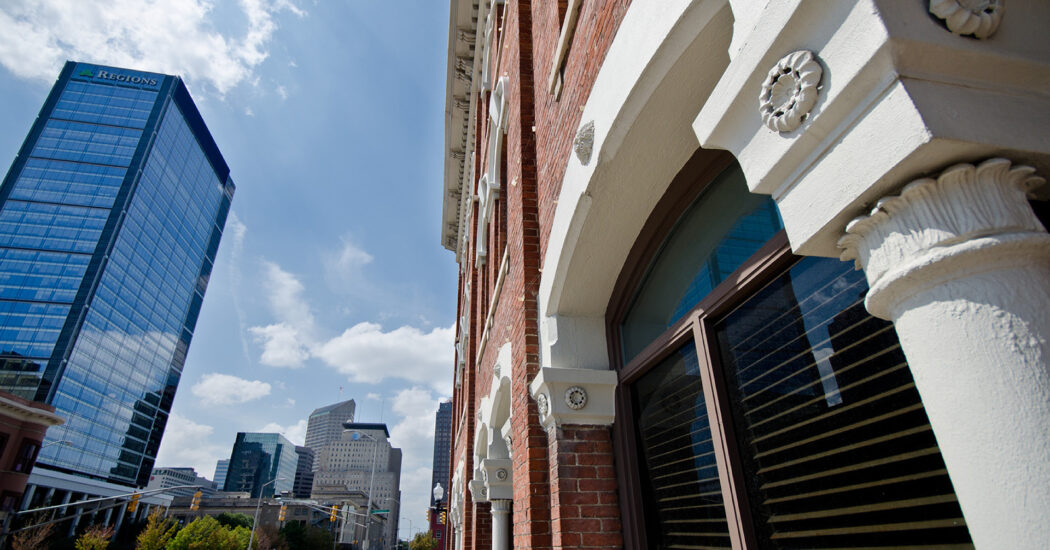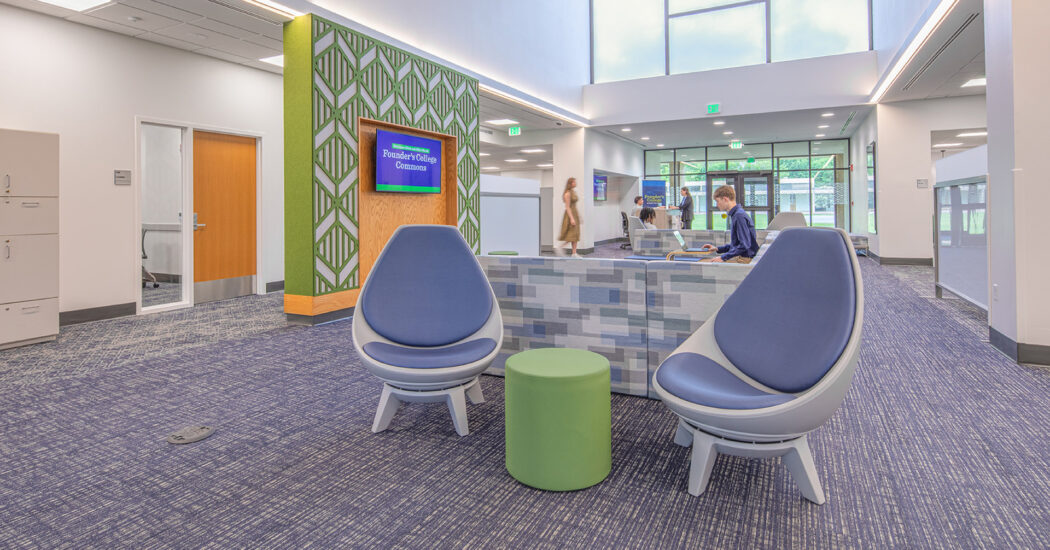Designing College Campuses for Student Health, Equity, and Performance—Part 1
-
Category
Studio-Higher Ed, Innovation -
Posted By
Sara Richey -
Posted On
Jun 24, 2021
Distraught, a friend described having sleepless nights concerned about her 19-year-old freshman son’s mental health. She wasn’t alone as many students across college campuses had a rough journey filled with isolation and anxiety from COVID-19.
College is about connecting, community, and forming relationships. As they prepare to welcome students back, administrators’ focus will be on well-being.
A May 2021 Pulse Point Survey from the American Council on Education revealed that 73% of college presidents ranked student mental health as the most pressing issue due to COVID-19, up 20% from last year. Additionally, 48% of college presidents ranked faculty and staff mental health as a top concern.
Campus buildings, design, and ‘place’ aren’t often recognized as vehicles to support health and wellness. Yet, mounds of publications, including the “Power of Place” by Winifred Gallagher and “Healthy Buildings” by Joseph Allen and John Macomber, unleash information with supporting evidence. Let’s begin peeling back layers starting with foundational information regarding place and space. What exactly is ‘place attachment’ and how is it connected to well-being?
Place Attachment and Well-Being
A survey conducted by The University of Victoria, Canada, defined “place attachment” as:
“the cognitive-emotional bond that forms between individuals and their important settings … with implications for their well-being.”
Research dating back to the 1990s has shown that when place attachment bonds are intact, there’s an association with life satisfaction and dimensions of well-being.

2015 Place Attachment Study, University of Victoria, Canada: Word Themes Tied to Well-being
When survey participants provided descriptions of a place, they considered themselves attached to, word themes emerged, such as belonging, memories, comfort-security, nature, freedom-control, and aesthetics.
Place Attachment’s Impact on and Campus Design
“When designing college campus facilities, our team’s goal is to create places that allow every student to succeed,” says Schmidt Associates CEO Sarah Hempstead, AIA, LEED-AP, “To accomplish this goal, students should feel safe, included, and able to balance learning, relaxation, and opportunities for activities—all of which form foundational memories. We have the power to create spaces that elicit these responses.”
For Ball State University’s North Residence Hall design, similar design guideposts were used. The inspiration for the residence hall design was taken from the 21st Century Project methodologies by the Association of College and University Housing Officers – International (ACUHO-I). The project’s intent is to transform the future of campus housing to attract and retain students. The four themes are:
- Community
- Flexibility
- Sustainability
- Technology
North Residence Hall, a 137,700-square-foot, 496-bed, STEM living/learning residence hall, was designed with a laser focus on ACUHO-I’s elements to enhance student engagement, well-being, and productivity.
Design elements include wayfinding and glass that leads students into stairwells for spontaneous engagement with neighbors, outdoor firepits for gatherings, and informal student lounges with checkerboard tabletops. Most rooms were intentionally designed as double occupancy for connection and belonging. The state-of-the-art facility, slated for LEED Certification, incorporates sustainable elements with low VOC materials, while the design never neglects comfort, student safety, or security. Electrical plug-ins are dropped from the ceiling in makerspace settings. Whiteboards, 3D printers, and glass surround break-out rooms that speak to employers seeking the next generation of critical thinkers, collaborators, and thought-leaders.
Associate Vice President Emeritus for Student Affairs and Director Emeritus of Housing and Residence Life, Alan Hargrave, and Director of Facilities Planning, Greg Graham, explain it well when describing the design intent in this Owner interview.

North Residence Hall – Ball State University
To put it in further perspective, an in-depth study on residential living-learning communities describes the benefits and students’ perceptions relating to a positive campus experience, increased engagement, and relevancy tied to their success.
In Part 2, we’ll discuss six tactical design themes and supported research such as nature, acoustics, and lighting as a continuum on how facility and campus design helps students thrive.







